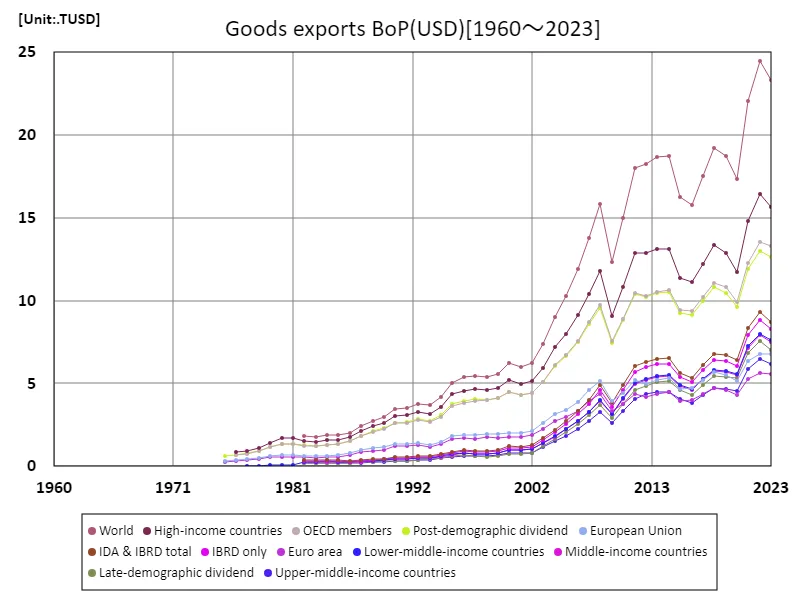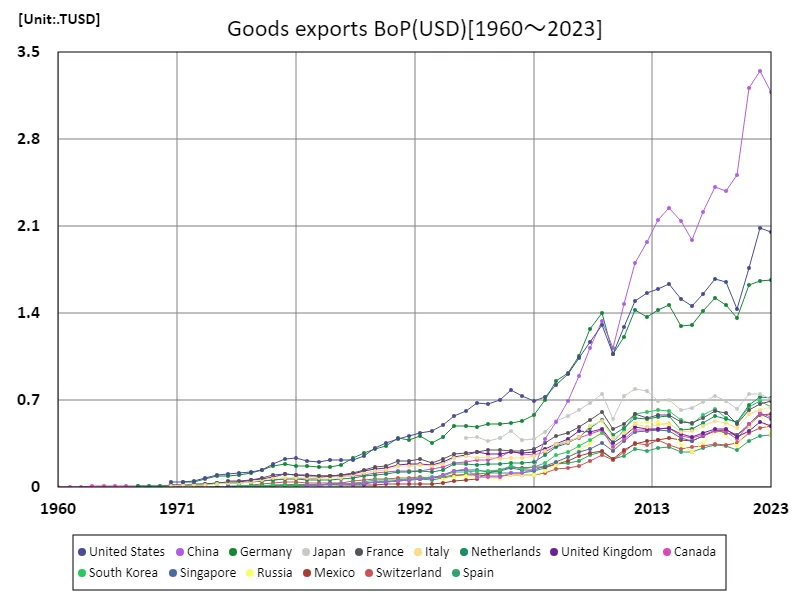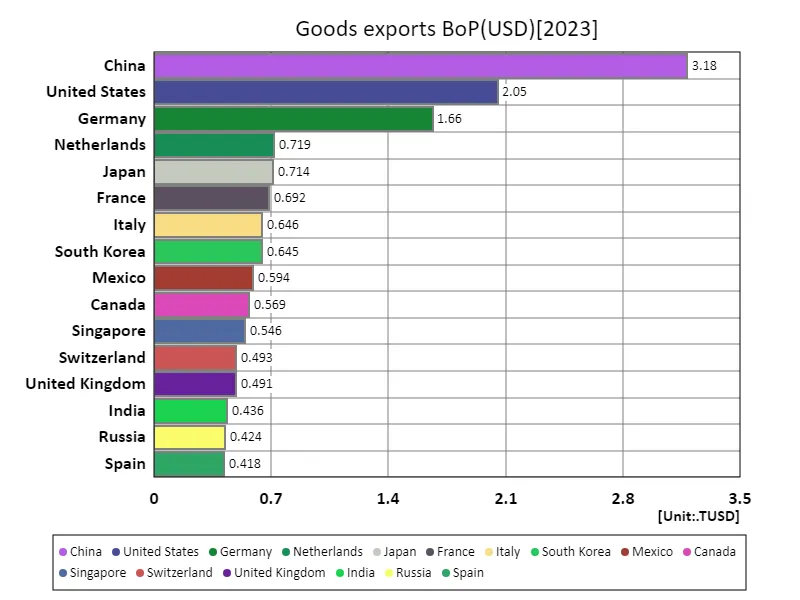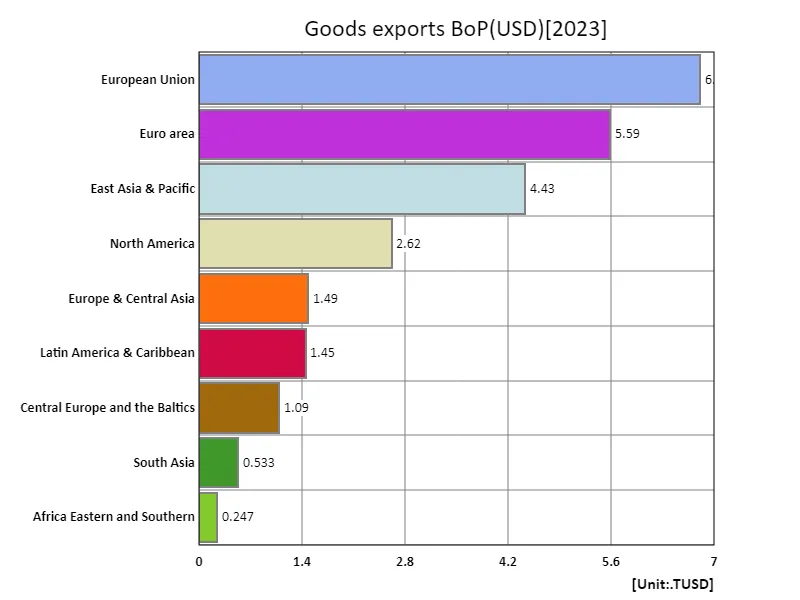Abstract
Value added of production in the world economy is a key factor, especially in industries including construction. According to data for 2023, Iran will have the largest production value added, which will reach 60.9 PLCU. This is an important indicator of domestic economic activity and industrial growth, and reflects the large role of the construction industry in the country’s gross domestic product (GDP). The construction industry is a sector that directly contributes to national development through infrastructure development and housing construction, and the high added value of its production shows a close relationship with economic growth. Similar trends are seen in other regions and countries and are influenced by differences in industrial structure and economic policies. Given the diversity of economies, comparing the value added of production is an important indicator for understanding trends in economic growth across countries and regions.
Goods and services exports and primary income (USD)
From 1960 to 2023, exports of goods and services and primary income (usd) in the world economy have experienced remarkable growth. In 2023, these items will reach a historic peak, totalling $37.9 trillion. This is largely due to the integration of the global economy, the expansion of trade, and the advancement of digitalization and technological innovation. The 1960s was a period marking increasing trade volumes and the beginning of international economic cooperation, yet data on primary income was relatively limited. However, from the 1970s to the 1980s, with the progress of trade liberalization, exports of goods and services increased significantly. With the increasing globalization in the 1990s, primary income also increased and international investment income became an important factor. Since the 2000s, the rise of emerging economies such as China and India has been remarkable. These countries have become important parts of global supply chains, helping to increase trade and primary incomes around the world. Especially in the 2020s, digitalization and the optimization of global supply chains led to the highest levels of exports of goods and services and primary income. This growth reflects the increasing interdependence of the global economy and is expected to continue to expand in the future.


The maximum is 24.5TUSD[2022] of World, and the current value is about 95.2%
Goods and services exports and primary income (USD) (worldwide)
The american economy’s goods and services exports and primary income (usd) experienced significant growth from 1960 to 2023. It will reach a peak of USD 4.47 trillion in 2023, representing 100% of the total. This is the result of America establishing itself as the center of the global economy and increasing its influence in the world economy. In the 1960s, American exports and primary income were relatively modest, but in the 1970s and 1980s, economic globalization and technological advances led to increased trade and investment. In the 1990s, free trade agreements and expanding international investment led to rapid growth in American exports and primary incomes. In particular, in the 2000s, the IT revolution and the globalization of financial markets had a major impact on the American economy. As we enter the 2020s, the American economy has grown further through technological innovation, digitalization, and the optimization of global supply chains. America provides the world with high-value-added products and services while expanding global investment opportunities. This resulted in exports of goods and services and primary incomes reaching record highs, further strengthening America’s economic power and international influence.


The maximum is 3.35TUSD[2022] of China, and the current value is about 95%
Goods and services exports and primary income (USD) (world countries, latest year)
The global economy’s goods and services exports and primary income (USD) will total USD 34.1 trillion, with an average of USD 302 billion, based on 2023 data. This figure reflects the complex interdependence and growth of the global economy. Over the past few decades, trade and primary incomes have grown rapidly, driven in large part by the rise of emerging market economies and developments in digital technologies. Especially since the 2000s, emerging countries in Asia, Latin America, and other regions have begun to play an important role in the global export market, boosting the total value of global exports. Technological innovation and infrastructure development accelerated, leading to the expansion of global supply chains. This has created more opportunities for many countries to supply their local products and services to the global market and earn revenue. On the other hand, issues such as trade friction and geopolitical risks have also had an impact. International trade restrictions and volatility affected market stability. However, expanding global markets and technological advances have helped sustain growth in exports and primary incomes across the world economy. Going forward, sustainable development and inclusive trade policies are expected to become increasingly important.


The maximum is 3.18TUSD of China, the average is 185GUSD, and the total is 21.1TUSD
Goods and services exports and primary income (USD) (region, latest year)
According to 2023 data, the European Union is the leading player in the global economy in goods and services exports and primary incomes, which totaled USD 39.7 trillion. The European Union’s exports are a massive 12.2 trillion USD, with the average being 4.42 trillion USD. This shows that Europe’s integrated market supplies a wide range of industries and services to the world and is achieving high economic growth. Over the past few decades, the European Union has promoted economic integration and facilitated internal and external market access through a common trade policy. The company has particular strengths in manufacturing and advanced technology services, and has strengthened its competitiveness in these areas. European companies are also demonstrating leadership in environmental technologies and sustainable energy, which account for a large part of their exports. Meanwhile, economic fluctuations and geopolitical risks continue to play a role. For example, trade restrictions and market fluctuations may affect exports. Furthermore, intensifying global competition and advancing technological innovation are creating an increasing need to develop new markets and opportunities. Going forward, it is important that the European Union maintains its leadership in the digital economy and innovation, and strengthens its strategy to foster sustainable growth. Additionally, compliance with international trade rules and joint efforts are also key to market stability and growth.


The maximum is 6.81TUSD of European Union, the average is 2.7TUSD, and the total is 24.3TUSD



Comments